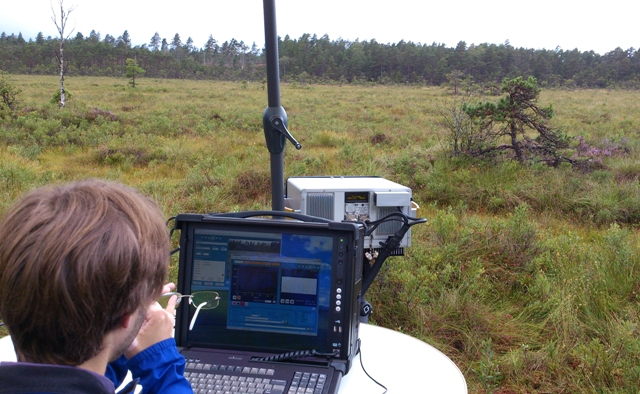Dec 1 2015
A camera so advanced that it can photograph and film methane in the air around us is now presented by a team of researchers from Linköping and Stockholm Universities. It can be an important part of the efforts to measure and monitor greenhouse gases.
 Camera test at Foljesjon, a lake in a research area west of Vanersborg, Sweden.
Camera test at Foljesjon, a lake in a research area west of Vanersborg, Sweden.
There are several questions surrounding the powerful greenhouse gas methane. Its rapid but irregular increase in the atmosphere has puzzled researchers. And there is a high degree of uncertainty with regard to the sources and sinks of methane in the landscape. A newly developed camera from Linköping University and Stockholm University can help to address these issues. The utility of the camera to both photograph and film methane has been demonstrated in a study that was recently published in Nature Climate Change.
”The camera is very sensitive, which means that the methane is both visible and measureable close to ground level, with much higher resolution than previously. Being able to measure on a small scale is crucial,” says Magnus Gålfalk, Assistant Professor at Tema Environmental Change, Linköping University who led the study.
The advanced hyperspectral infrared camera weighs 35 kilos and measures 50 x 45 x 25 centimeters. It is optimized to measure the same radiation that methane absorbs and which makes methane such a powerful greenhouse gas. The camera can be used to measure emissions from many environments including sewage sludge deposits, combustion processes, animal husbandry and lakes. For each pixel in the image the camera records a high-resolution spectrum, which makes it possible to quantify the methane separately from the other gases.
The camera was developed by a team that combined knowledge from many different fields of expertise, including astronomy, biogeochemistry, engineering and environmental sciences.
“This gives us new possibilities for mapping and monitoring methane sources and sinks, and it will help us understand how methane emissions are regulated and how we can reduce emissions. So far the camera has been used from the ground and now we’re working to make it airborn for more large-scale methane mapping,” says David Bastviken, professor at Tema Environmental Change, Linköping University and the principal investigator on the project.
Professor Bastviken emphasises that the project would not have been possible without funding for methodological development from the Knut and Alice Wallenberg Foundation and the Swedish Research Council, VR.
In addition to Magnus Gålfalk and David Bastviken from Linköping University, Professors Göran Olofsson and Patrick Crill from Stockholm University contributed to the project.